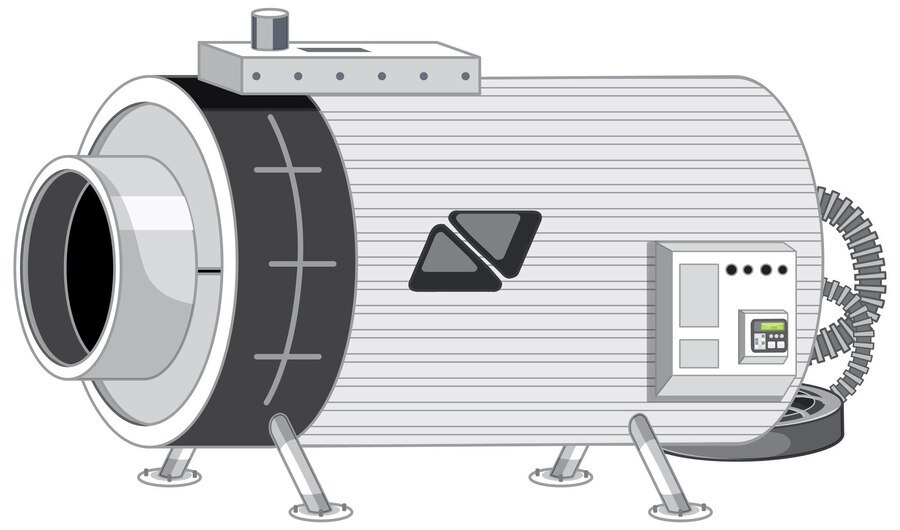The cooling system in any engine, whether in a car, industrial machine, or power plant, plays a pivotal role in ensuring that the engine operates efficiently and within safe temperature ranges. Among the critical components of this system is the coolant tank heat exchanger. A coolant tank heat exchanger is designed to manage the heat generated by the engine by transferring excess heat from the coolant to other mediums, ensuring the engine doesn’t overheat.
In this article, we’ll explore the functionality, design, benefits, and potential challenges of coolant tank heat exchangers. Alongside a comprehensive comparison of different types available in the market. By understanding the intricacies of this essential component, you’ll be better equipped to appreciate its role in maintaining optimal engine performance.
What is a Coolant Tank Heat Exchanger?
A coolant tank heat exchanger is a device used in various machinery and vehicles to transfer heat between two fluids without mixing them. Typically, one fluid is the coolant that circulates through the engine. While the other could be air, water, or another cooling medium. These heat exchangers come in different designs, but their core function remains the same: to maintain the temperature of the system by dissipating the excess heat generated during operation.
By maintaining proper engine temperature, these heat exchangers help to avoid thermal stresses that could potentially damage internal components, ensuring the longevity and efficiency of the engine or machinery.
How Does a Coolant Tank Heat Exchanger Work?
A coolant tank heat exchanger operates on the principle of heat transfer. Where heat from a hotter medium (the coolant) is transferred to a cooler one (typically air or water). In a standard setup:
- Coolant Circulation: The coolant, often a mixture of water and antifreeze, circulates through the engine or machine to absorb heat.
- Heat Transfer: The coolant flows into the heat exchanger, where it comes into contact with a secondary cooling medium.
- Temperature Regulation: The heat is transferred to the secondary medium, which could either be air (as in air-cooled systems) or water (as in water-cooled systems). This process cools the coolant before it re-enters the engine.
- Return Loop: The cooled coolant returns to the engine or machine, and the process repeats.
By continually transferring heat away from the engine, the coolant tank heat exchanger ensures the engine operates at an optimal temperature. Which is crucial for efficient performance and preventing overheating.
Types of Coolant Tank Heat Exchangers
Coolant tank heat exchangers come in various types, each suited for different applications. Below are the most commonly used designs:
1. Plate Heat Exchanger
Plate heat exchangers are made up of multiple thin, flat plates that provide a large surface area for heat transfer. The plates are stacked together and are separated by gaskets. Coolant flows between these plates, and heat is transferred to the secondary cooling fluid. These exchangers are compact, efficient, and ideal for smaller, high-performance systems.
2. Shell and Tube Heat Exchanger
Shell and tube heat exchangers consist of a series of tubes through which the coolant passes. These tubes are housed within a larger cylindrical shell, and heat is transferred from the coolant inside the tubes to the cooling medium in the shell. This design is common in larger industrial machines and marine engines due to its high heat capacity.
3. Air Cooled Heat Exchanger
An air-cooled heat exchanger uses ambient air to cool the coolant. The coolant flows through a series of tubes or finned surfaces, and fans are used to blow air across these surfaces. This design is ideal for environments where water is scarce or unavailable, such as in remote areas or certain industrial applications.
4. Water Cooled Heat Exchanger
In water-cooled systems, water is used as the secondary fluid to absorb the heat from the coolant. This type is more efficient than air-cooled exchangers and is commonly used in automotive and industrial applications. It requires a steady supply of water to maintain the cooling process.
Benefits of a Coolant Tank Heat Exchanger
- Enhanced Engine Efficiency: By maintaining the optimal temperature, the coolant tank heat exchanger ensures that the engine runs efficiently, preventing overheating, which can cause power loss or even engine failure.
- Increased Longevity: With effective temperature regulation, the engine components face less wear and tear, extending the life of the machine.
- Improved Fuel Economy: When engines run at optimal temperatures, they operate more efficiently, leading to better fuel economy.
- Environmentally Friendly: Efficient cooling systems reduce the need for excessive coolant or antifreeze, leading to fewer waste products and more sustainable operation.
- Cost Savings: Properly functioning heat exchangers reduce the risk of engine damage and the associated repair costs, providing long-term savings.
Common Issues with Coolant Tank Heat Exchangers
Despite their importance, coolant tank heat exchangers can face several issues that might impact their performance. These include:
- Clogging: Over time, debris or sediment buildup can clog the heat exchanger, reducing its efficiency. Regular maintenance is crucial to avoid this.
- Corrosion: The constant flow of coolant and exposure to various chemicals can lead to corrosion, especially if the coolant isn’t replaced regularly or the exchanger isn’t maintained.
- Leaks: Any damage to the heat exchanger, such as cracks in the tubes or seals, can cause coolant leaks, leading to overheating.
- Fouling: Buildup of mineral deposits or algae (in water-cooled systems) can lead to fouling, reducing heat transfer efficiency.
To mitigate these issues, regular maintenance, including cleaning and periodic replacement of the coolant, is essential.
Coolant Tank Heat Exchanger vs. Other Cooling Methods
| Feature | Coolant Tank Heat Exchanger | Air-Cooled Systems | Water-Cooled Systems |
| Cooling Efficiency | High | Moderate | Very High |
| Maintenance Requirements | Moderate | Low | High |
| Space Requirements | Moderate | Low | High |
| Cost | Moderate | Low | High |
| Environmental Impact | Low | Moderate | Low |
Conclusion
In conclusion, the coolant tank heat exchanger plays an indispensable role in maintaining the optimal performance of engines and machines across various industries. By transferring excess heat and preventing overheating, it ensures efficiency, longevity, and cost savings. Understanding the different types and benefits of heat exchangers allows engineers and operators to make informed decisions based on the specific needs of their systems.
Regular maintenance and timely repairs are crucial in maximizing the performance of a coolant tank heat exchanger. Whether in automotive applications, industrial machinery, or power plants. These systems are key to ensuring the longevity and optimal functioning of engines.
FAQs
What is the purpose of a coolant tank heat exchanger?
It transfers heat from the coolant to a secondary fluid, maintaining the engine or machine temperature within safe operating ranges.
How often should a coolant tank heat exchanger be maintained?
Maintenance should be performed regularly, typically once a year or according to the manufacturer’s recommendations, to prevent clogging and corrosion.
Can a coolant tank heat exchanger be repaired?
Yes, most issues like leaks or clogging can be repaired, but severe damage may require replacement.
Are coolant tank heat exchangers environmentally friendly?
Yes, they help reduce waste and improve fuel efficiency, making them environmentally friendly.
What types of fluids are used in coolant tank heat exchangers?
Coolant, which is usually a mixture of water and antifreeze, is the most common fluid. The secondary medium can be water, air, or oil, depending on the system design.







